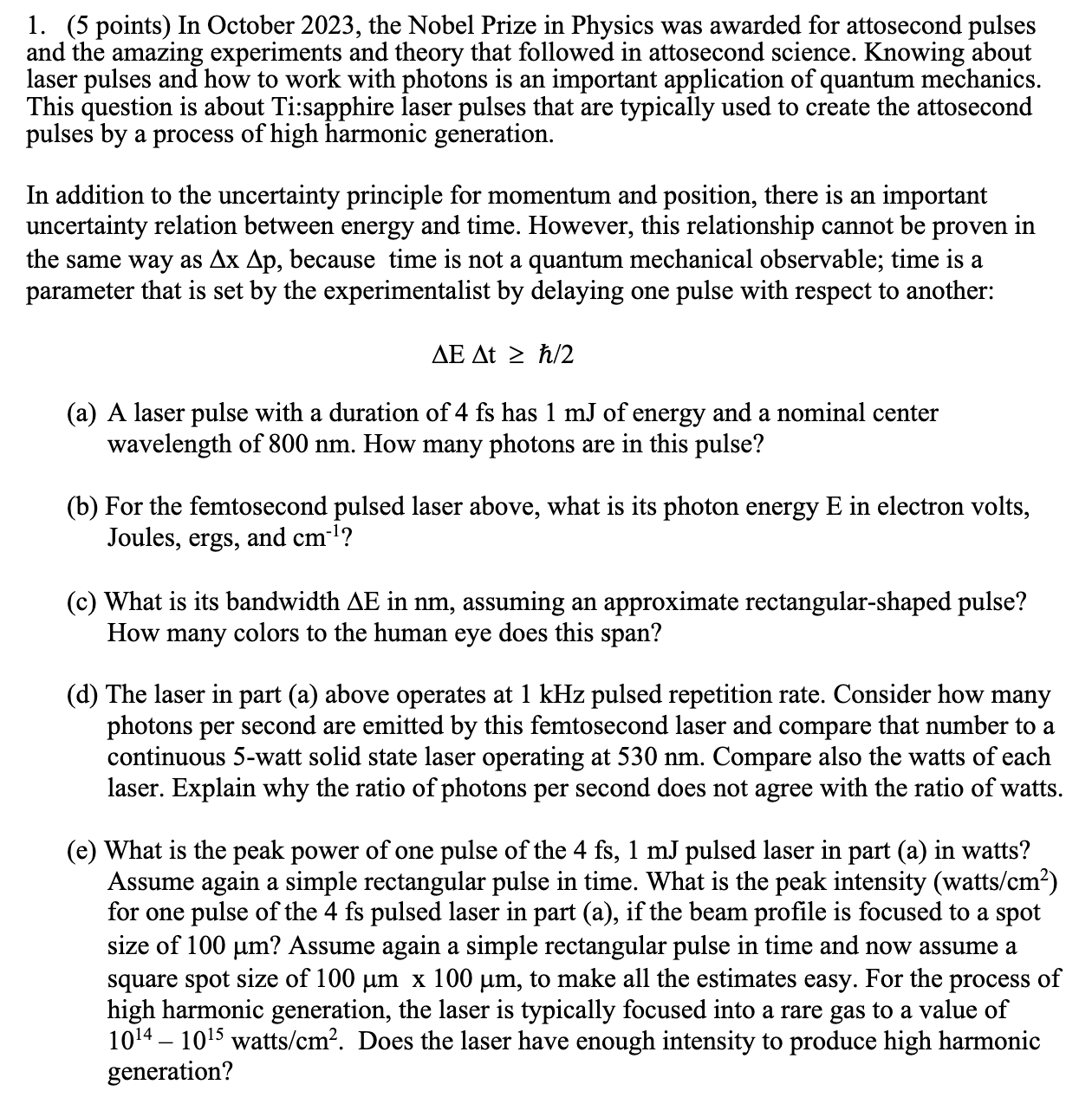Answered step by step
Verified Expert Solution
Question
1 Approved Answer
Update and Approve 1. (5 points) In October 2023, the Nobel Prize in Physics was awarded for attosecond pulses and the amazing experiments and theory
 Update and Approve
Update and Approve1. (5 points) In October 2023, the Nobel Prize in Physics was awarded for attosecond pulses and the amazing experiments and theory that followed in attosecond science. Knowing about laser pulses and how to work with photons is an important application of quantum mechanics. This question is about Ti:sapphire laser pulses that are typically used to create the attosecond pulses by a process of high harmonic generation. In addition to the uncertainty principle for momentum and position, there is an important uncertainty relation between energy and time. However, this relationship cannot be proven in the same way as Ax Ap, because time is not a quantum mechanical observable; time is a parameter that is set by the experimentalist by delaying one pulse with respect to another: /2 (a) A laser pulse with a duration of 4 fs has 1 mJ of energy and a nominal center wavelength of 800 nm. How many photons are in this pulse? (b) For the femtosecond pulsed laser above, what is its photon energy E in electron volts, Joules, ergs, and cm? (c) What is its bandwidth AE in nm, assuming an approximate rectangular-shaped pulse? How many colors to the human eye does this span? (d) The laser in part (a) above operates at 1 kHz pulsed repetition rate. Consider how many photons per second are emitted by this femtosecond laser and compare that number to a continuous 5-watt solid state laser operating at 530 nm. Compare also the watts of each laser. Explain why the ratio of photons per second does not agree with the ratio of watts. (e) What is the peak power of one pulse of the 4 fs, 1 mJ pulsed laser in part (a) in watts? Assume again a simple rectangular pulse in time. What is the peak intensity (watts/cm) for one pulse of the 4 fs pulsed laser in part (a), if the beam profile is focused to a spot size of 100 m? Assume again a simple rectangular pulse in time and now assume a square spot size of 100 m x 100 m, to make all the estimates easy. For the process of high harmonic generation, the laser is typically focused into a rare gas to a value of 10141015 watts/cm. Does the laser have enough intensity to produce high harmonic generation?
Step by Step Solution
There are 3 Steps involved in it
Step: 1

Get Instant Access to Expert-Tailored Solutions
See step-by-step solutions with expert insights and AI powered tools for academic success
Step: 2

Step: 3

Ace Your Homework with AI
Get the answers you need in no time with our AI-driven, step-by-step assistance
Get Started


